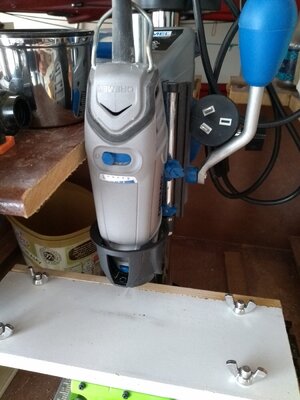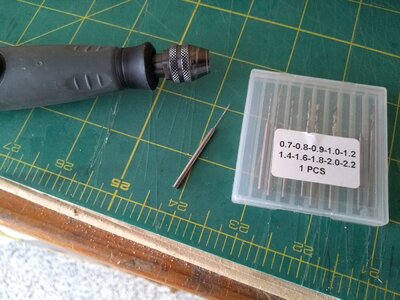Using a pin vice to drill a treenail hole is simple enough, but I am having a problem with holes that will be seen from both sides. I am struggling to keep the drill vertical (horizontal). I have thought of a drill press for my Dremel, but I am using bits that are too small for the chuck, and I doubt that a bit of .5 mm would survive even the lowest speed. I would appreciate any tips on how to keep my pin vice vertical. My current issue is a cathead where four holes on the top need to emerge on the bottom with a similar spacing and pattern.
You are using an out of date browser. It may not display this or other websites correctly.
You should upgrade or use an alternative browser.
You should upgrade or use an alternative browser.
Hello, Digger. A drill press would be your preferred choice. You can technically enlarge the shank by twisting a thin brass (0.2mm) wire around the shank. But...if you still want to use the pin vise, here is the image for a simple jig,
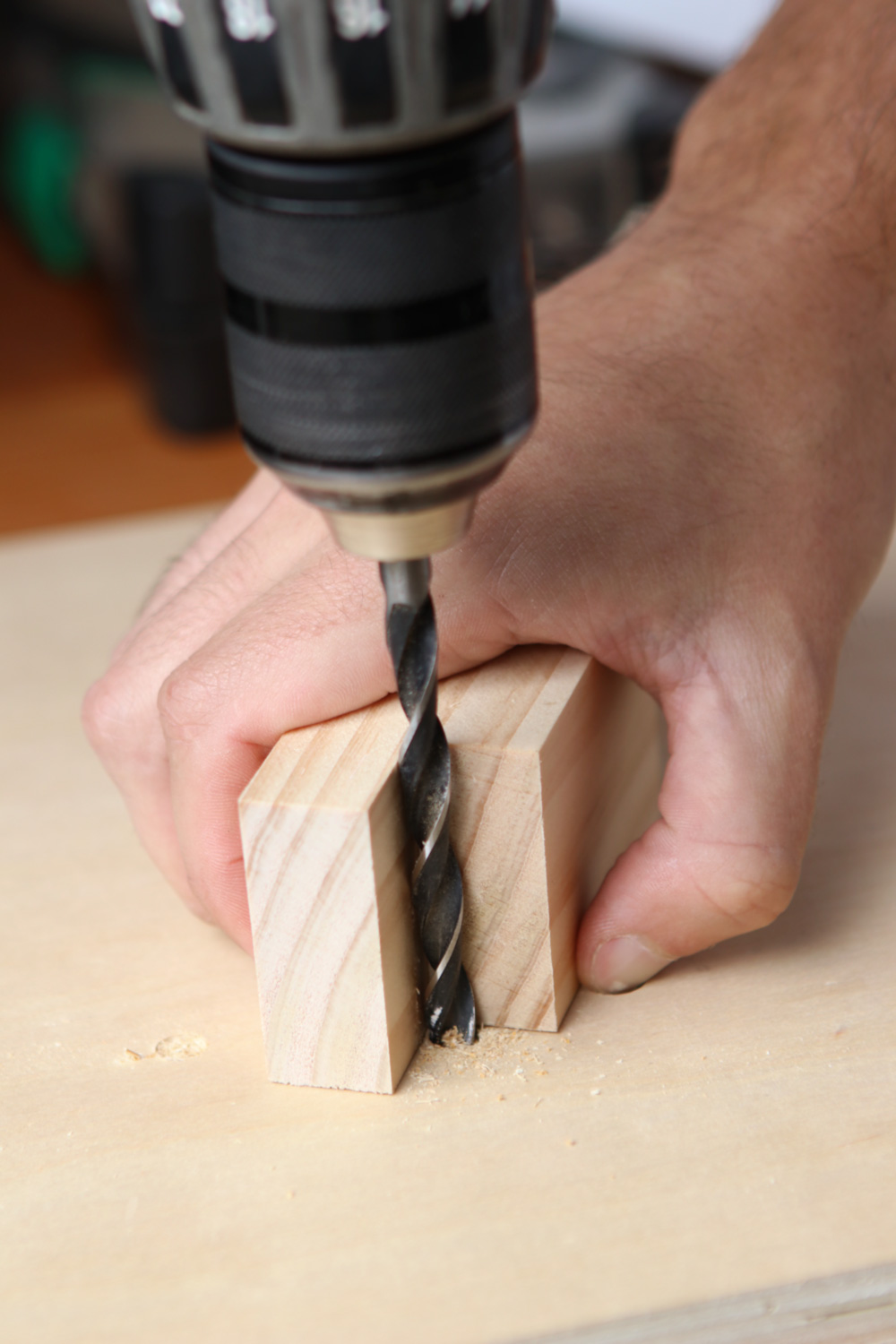
Hope this will help.

Hope this will help.
Thanks Jimsky, I will give that a try. I will also explore the idea of wrapping a drill shank with wire.
If the nails / bolts do not have to hold something, I would fake them like in this sketch of a cathead
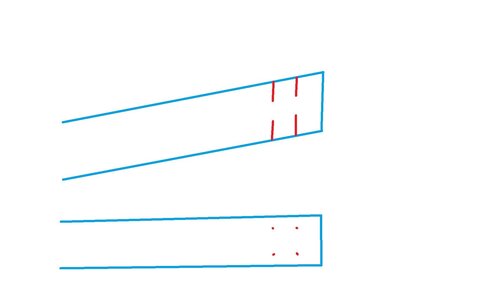
When I have such a situation like you described I make for the four nails all together eight holes, four from the top and also four from the bottom - most important: not connected
Drilling with 0,5mm I am doing also by hand - It take some more time, but you can control the depth of the drill much better.
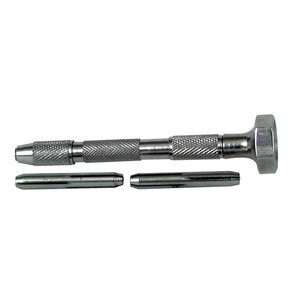
Do not forget to mark the location of the holes with a scriber before drilling
=> with this you will get a correct pattern on both sides

When I have such a situation like you described I make for the four nails all together eight holes, four from the top and also four from the bottom - most important: not connected
Drilling with 0,5mm I am doing also by hand - It take some more time, but you can control the depth of the drill much better.

Do not forget to mark the location of the holes with a scriber before drilling
=> with this you will get a correct pattern on both sides
Last edited:
What you say makes sense and I will apply the 'fake' method where appropriate. In my case with the catheads, I have to run cordage through the holes, and thus they must be drilled all the way through. I have three pin vices and the best for good alignment is the one you have shown. It allows you to control the angle with a finger on top, while twisting it with the other hand. Thanks for your input.
That is good news, but am I to assume that .7mm is the smallest bit available in that style? I find I am often needing a smaller hole than that.
There are the smallest drill bits available than 0.7 mm. However, most of those drillbits will be PCB (designed to drill circuit boards). It is possible to use them on wood and soft metals (brass, copper) but they are not really good, IMHO. They are ranged from 0.2 to 0.5. The smallest size of a spiral (jobber) drill bit that I could find - is 0.5mm, they available in the jewelry stores.That is good news, but am I to assume that .7mm is the smallest bit available in that style? I find I am often needing a smaller hole than that.
Thanks again Jimsky. I am starting to think that I am getting in too deep in this area. I think I will try and concentrate on drilling true verticals by hand.
my tuppence worth: one can buy small size drills, (e.g. 0,5 mm) with a larger shaft. Ebay has them for instance, HSS drill, 0,5 mm; shaft 2,35 mm.


A standard set of hobby drill bit usually includes sizes down to #80 which is 0.343mm. I have had no problems drilling in wood with these smalll bits using either a pin vise or a Dremel, but they go dull very quickly. A Jacobs type chuck can be purchased for the Dremel which accepts all sizes of bits. Without a Dremel drill press it is tough to drill vertical holes.
I put a scale conversion chart in last weeks forum because I didn't know where to put in in this week forum, sorry guys but you'll find it last weeks forum under scale conversion if it any help to all.
I found that using the manual pin vise is the more difficult to control. I have started using the actual Drexel tool for these same type holes where you need a clean pass through hole. Why? The larger Dremel tool is easier for me to keep aligned to the hole direction. I can actually use two hands to guide the alignment. And because the Drexel is a faster speed, drilling an aligned hole is less likely to drift off the alignment. I rarely use a manual pin vise anymore…the exception is when clearing or enlarging holes in rigging blocks…then the pin vise is called for. Last, I use a straight pin like that used for sewing to place a starter hole to keep the Dremel drill bit from drifting around.
Last edited:
- Joined
- Feb 21, 2020
- Messages
- 79
- Points
- 58

Why didn't I think of that? Thanks!!Hello, Digger. A drill press would be your preferred choice. You can technically enlarge the shank by twisting a thin brass (0.2mm) wire around the shank. But...if you still want to use the pin vise, here is the image for a simple jig,

Hope this will help.
Does anyone have ant recommendations for the type of drill bit works well in drilling small holes (.5 - .8mm) in thin brass? Also, if anyone can suggest an actual link to the thin drill bits with larger shanks (LuigiSoft's post above).
Thanks Luigi. All input is appreciated.my tuppence worth: one can buy small size drills, (e.g. 0,5 mm) with a larger shaft. Ebay has them for instance, HSS drill, 0,5 mm; shaft 2,35 mm.

Thanks for your input Jim. I think the real problem is me, rather than the tools.I found that using the manual pin vise is the more difficult to control. I have started using the actual Drexel tool for these same type holes where you need a clean pass through hole. Why? The larger Dremel tool is easier for me to keep aligned to the hole direction. I can actually use two hands to guide the alignment. And because the Drexel is a faster speed, drilling an aligned hole is less likely to drift off the alignment. I rarely use a manual pin vise anymore…the exception is when clearing or enlarging holes in rigging blocks…then the pin vise is called for. Last, I use a straight pin like that used for sewing to place a starter hole to keep the Dremel drill bit from drifting around.
Here is the link. They are made in Germany and are a bit pricy but...you get what you paid for! Highly recommend.Does anyone have ant recommendations for the type of drill bit works well in drilling small holes (.5 - .8mm) in thin brass? Also, if anyone can suggest an actual link to the thin drill bits with larger shanks (LuigiSoft's post above).
BTW. I don't work for this store...
That is a bloody good idea. It brings me back to where I wanted to be. The problem was not speed, but vertical accuracy. What I really want is a rig that hold a pin vice vertical, allowing me to operate it by hand.You can also chuck very small bits in the pin vice, then chuck the pin vice (sans top) in the drill press. Then turn the spindle by hand if you are working on very delicate parts.



